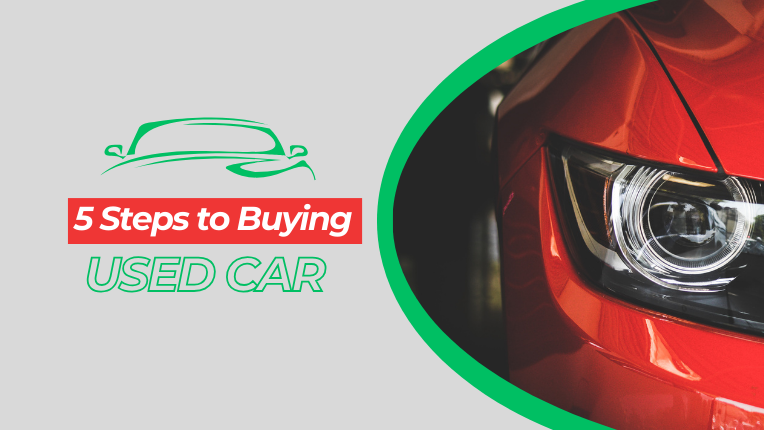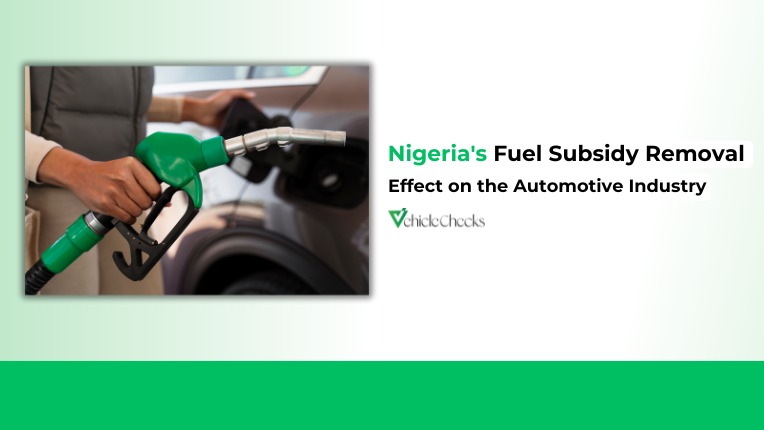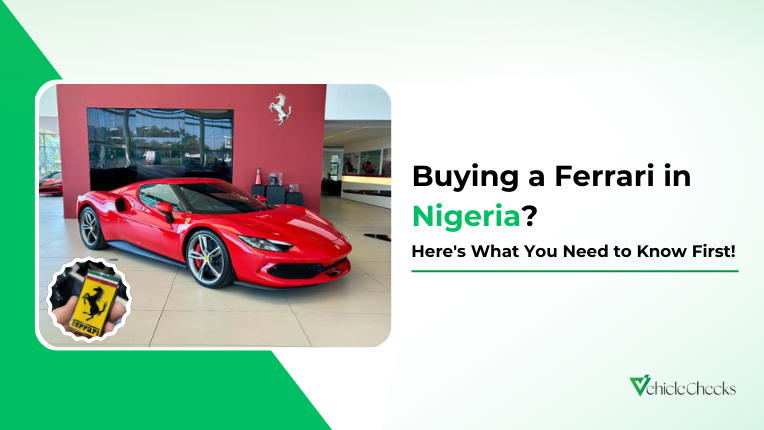If you are looking to buy a used car, it is important to have all the meaningful facts needed for proper decision-making. The automotive industry in Africa is growing fast as more European used vehicles are shipped into the country. This article will provide a used car buying checklist to enable you to make a proper decision.
Let us recall that in recent times, so many vehicles have been affected by floods, hail, and hurricanes in the US and Canada. Guess the final destination of these vehicles? Africa, of course.
Here are some things you must do before buying any used vehicle.
General Checks
Proper lighting should always be considered. Hidden panel damage can occur, and you must see the car clean and dry to notice it. Our detailed guides will assist you with this. Ensure that when searching for the parts you remove, you look under the bonnet and beneath the car frame equally. Pay attention to all signs of rust, previous leaks, or inconsistent or patchy paint jobs, which can indicate past accidents.
Get a Test Drive
If possible, test drive again and again, using the checklist—we will get to it—as your map. Ideally, find someone to come along with you and bounce off the questions against; the typical test drive should last 30 minutes. For speed testing, take the car to the expressway, and for the inclines test, look for hills to test the gear and the hand brakes.
Clear weather is nearly ideal for inspection, while rain is a blessing when it comes to the test drive. You will get a somewhat better picture of the wipers and probably the tires and can find some fancy leaks. Notice how the car reacts to steering movements, listen for any strange sound, and never neglect to test the brakes.
Get a Mechanical Inspection
Whereas there is no doubt that an opinion from a friend is always welcome, do not take the mechanical inspection to a buddy, if they miss something, it is considered to be ‘‘bad luck.’’ However, a professional service, your mechanic, or any reputable garage has to adhere to a standard. If they are wrong, you will have grounds to bring them to book whenever you encounter issues. A comprehensive pre-purchase check will not pinch your pockets hard – it will generally cost around ₦120,000 and this is a small amount of the total amount you are to spend on the car. A professional mechanic will assess every elemental aspect of the car, including the engine, and the transmission system, the suspension system, and the electrical system, among others, thereby ensuring that one is buying the best car.
READ ALSO: Does Vehicle Insurance Covers Theft?
Don’t Forget the Paperwork
The car itself is just part of the story. There are many documents to check, especially if you’re buying from a dealer. Below are some documents from a Nigerian perspective, these documents can vary from country to country.
- Valid Road Worthiness Certificate: Any car sold by a dealer must have a current (less than 1 month old) roadworthiness certificate. Private sellers can sell without one, but they have to clearly mark the car as “sold as is.”
- Consumer Information Notice (CIN): Dealers (not private sellers) need to provide a CIN for every car they sell. This document tells you important details like the dealer’s info, whether they’re registered, the car’s price, any outstanding debts, year of manufacture, make, model, engine size, fuel type, odometer reading (or a statement that it might be inaccurate), and if the car has a history of being damaged when imported. You should get a copy of the CIN if you buy the car.
- Debt Check: If you buy privately, there’s a chance the car could be repossessed if it has outstanding debts. Use a vehicle history check service to make sure the car is clean. With a registered dealer, you won’t be liable for such debts unless they inform you about them beforehand.
- Ownership Proof: The car’s registration certificate shows the current registered owner. This should match the person or company (dealer or private seller) you’re buying from. If anything seems fishy, contact the police to check if the car is reported stolen.
- Sale Agreement: Dealers must give you a written sale agreement and a signed copy of the CIN. Don’t sign anything until you understand everything, especially the parts about interest rates and warranty costs. Be wary of any “documentation fees” charged by the dealer.
- Change of Ownership: Both buyer and seller need to fill out forms to transfer ownership. The buyer pays the fee and is ultimately responsible for this change. If you’re buying privately, make sure the transfer is complete before you hand over the car. You don’t want to be stuck with someone else’s parking tickets!
Used Car Buying Checklist for African Car Buyers
We’ll provide a detailed checklist for each of these steps to help you inspect the car thoroughly—under the hood, outside, inside, and during the test drive. Stay tuned!
Test drive
Kindly refer to the paragraph above on test drive, as reminder, do this with a companion, so you can get another opinion.
❏ Controls don’t suit you or are stiff to move.
❏ Free play in the steering wheel.
❏ The engine is hard to start.
❏ The vehicle moves crabwise, or the wheels wobble (get someone to check as you drive away)
❏ The handbrake won’t hold the car on a steep hill.
❏ The clutch slips or doesn’t release properly when engaging gears.
❏ Gears (or automatic shifts) don’t change smoothly.
❏ Odd engine noises.
❏ Petrol or oil smells.
❏ Hard suspension on rough roads.
❏ Overheating.
❏ The car pulls to one side, or the steering wheel not centered when driving straight.
❏Exhaust smoke: Let the engine idle for a bit, then rev it up, or drive down a long hill and accelerate at the bottom. Different colors of smoke can indicate various issues: blue smoke suggests the car is burning oil, black smoke points to problems with the fuel mixture, and white smoke, especially after the engine has warmed up, may signal a water leak.
❏ The engine runs on when you turn it off.
❏ Brakes are weak, the pedal goes right to the floor, or the vehicle doesn’t stop straight (test on a smooth, even road surface).
Outside the car
❏ Rust holes or bubbles in the paintwork (especially door bottoms behind the rubber seals, wheel arches, around the petrol cover, boot, and windows.)
❏ The filler used to repair rust or accident damage
❏ Color variations in paintwork or in different panels (a sign of accident damage). ❏ Bumps or ripples along panels (a sign of accident damage)
❏ Shock absorbers are worn (push down on each corner of the car; it’s a bad sign if it bounces more than twice).
❏ Doors, boots, or bonnet don’t open and shut or lock properly (the gaps around the edges should be even).
❏ Damaged or cracked glass (this may not pass a warrant of fitness
READ ALSO: Exploring Vehicle Theft Statistics on Africa
Under the car
Depending on the circumstances, you may want to use a torch light while handling this part of the inspection.
❏ Worn tire tread (it’s illegal if less than 1.5mm deep over 75% of the tread).
❏ Tires are worn unevenly or feathered on one side of the tread pattern (a sign of wheel misalignment).
❏ Tires of different types or sizes.
❏ Spare tire in poor condition.
❏ The underbody shows fresh patches of underseal.
❏ Rust in the underbody.
❏ Leaks on the ground under the vehicle.
❏ Loose exhaust system.
❏ Holes in the exhaust (place a dampened rag over the tailpipe while the engine runs; spitting noise indicates holes).
Inside the vehicle
❏ The interior is too small (check legroom and headroom front and back).
❏ Seat (check for comfort, damage, and adjustability).
❏ Seatbelts need to be fixed, frayed, or badly faded.
❏ Headlining damaged.
❏ For windows that don’t wind down easily or have dampness or rust in the floor pan, lift up the carpet (indicates leaks in windows and doors or perhaps a flood-damaged vehicle).
❏ Missing jack, wheel brace, or spare wheel in the boot.
❏ All the controls (indicators, wipers, lights, locks, gauges and warning lights, heater, air conditioning, stereo, etc).
❏ Cigarette smell (non-smokers may find this hard to get rid of).
Under the bonnet
❏ Oil is low on the dipstick (could be an oil burner or a leak).
❏ Oil creamy or milky (water in oil: a sign of a blown head gasket).
❏ Rusty water in the radiator or overflow tank.
❏ Radiator fins are rusted or crumbly.
❏ Leaks of water, oil, or petrol.
❏ Corrosion around battery terminal and surrounding bodywork.
❏ Brake fluid or power steering fluid low.
❏ Signs of accident repair.
Conclusion
In order to properly purchase a used car in Africa, the buyer should invest time, perform all the prescribed investigations, and thus avoid unpleasant scenarios. As more European-marked used vehicles now flood African markets and US and Canadian used exports, which are likely to have been affected by floods, hail, and hurricanes, thorough vetting is appropriate.
One of the key steps in this vetting process is conducting a VIN check to verify the vehicle’s history, including any past accidents, flood damage, or title issues. The main technique also implies that a professional should inspect mechanical parts and systems, such as the power plant, gearbox, and suspension. The paperwork includes a sound roadworthiness certificate, CIN and Solvency Checks, a fast bill of sale, and proper transfer of title/registration to the buyer.
So remember this checklist and remain alert at each stage you will be able to make a wise decision going for a good used car. Just know that it is for the safety of your car and for your own safety and satisfaction with your car as you use it on the road.





